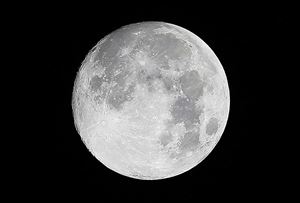
EDITORIAL
Moon dust
Who's that LADEE? Who's that Lunar Atmosphere and Dust Environment Explorer?
10/2/2013
A NASA spacecraft will study how moon dust interacts with light above the lunar surface.
The Lunar Atmosphere and Dust Environment Explorer (LADEE) isn’t the most glamorous mission NASA has ever launched. But it represents a giant step forward for America’s re-engagement with the moon.
The unmanned LADEE spacecraft recently was launched from Wallops Island, Va., atop a Minotaur V rocket. Unlike the Apollo missions of a generation ago, LADEE is orbiting the moon for 100 days studying the exosphere — its very thin atmosphere. It also is searching for clues about how dust moves across the lunar surface.
One of the great unresolved questions of the Apollo missions was the source of the mysterious yellow glow on the moon’s horizon reported by astronauts conducting experiments on the surface. NASA had no explanation.
The $280 million LADEE mission is studying how moon dust interacts with light far above the lunar surface. Examining the subtle interaction among dust, light, and atmosphere of the moon’s exosphere will enhance understanding of the similarly thin atmosphere around asteroids, icy planets, and Mercury.
At the end of its mission, LADEE will execute a crash into the moon’s surface, setting up a plume of dust into the atmosphere that will be studied by the next probe.
It may be true that there’s nothing new under the sun, but even dust can sometimes be fascinating.